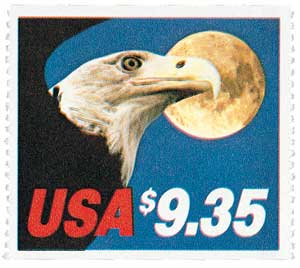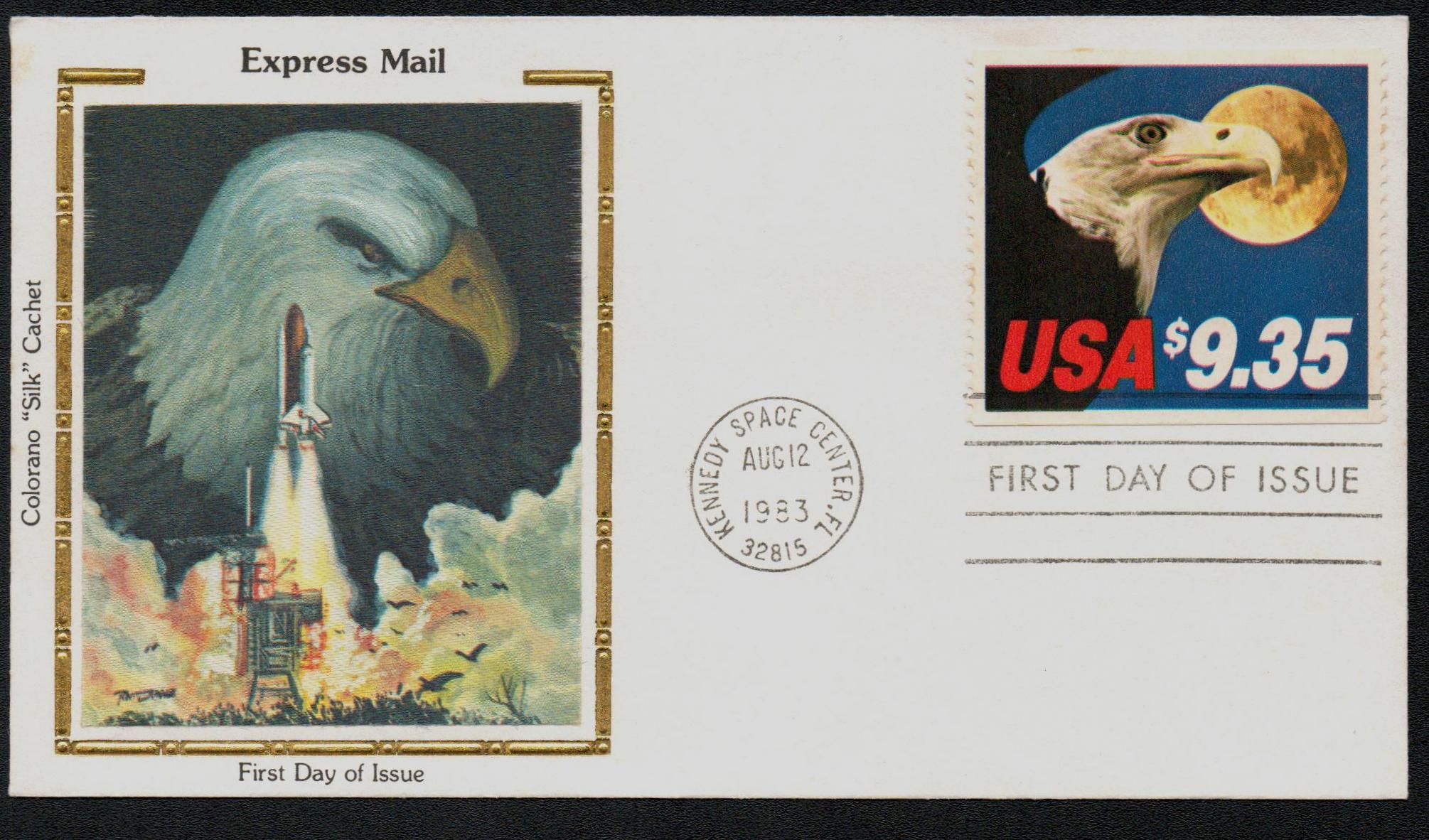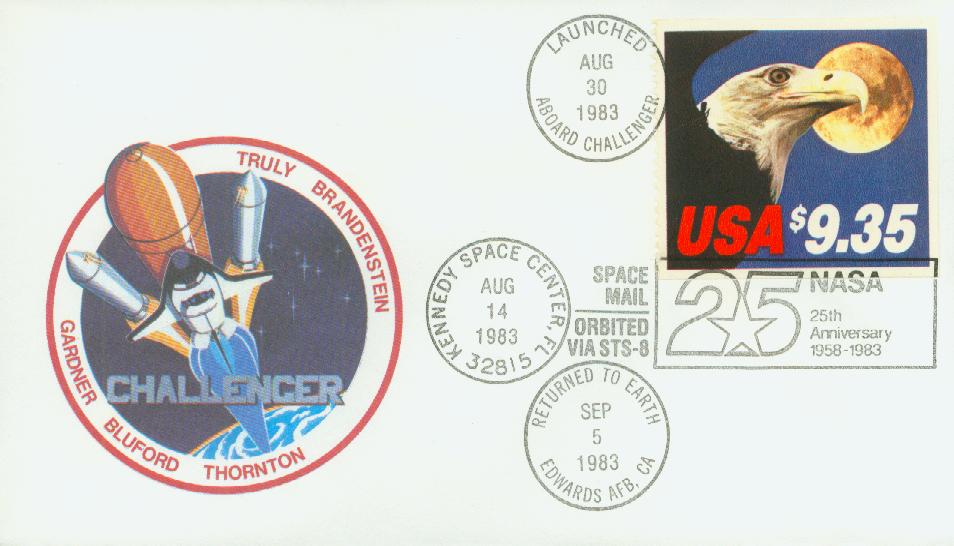
# 1909a - 1983 $9.35 Eagle/Moon,bklt pane/3
Â
1983 $9.35 Eagle and Full Moon
Express Mail
City:Â Kennedy Space Center, FL
Quantity:Â 18,000,000
First U.S. Express Mail StampÂ

On August 12, 1983, the USPS issued its first Express mail stamp, though the service, and those like it, had been available for several years.
Customers paid to have packages shipped quickly long before the post office offered express mail. American Express and Wells Fargo began as express companies that picked up shipments at a business or home and delivered them to the door of the receiver. A tax was paid for this service, and an Express stamp was applied as proof.
The U.S. Postal Service began experimenting with Express Mail in 1970, and by 1977, it was a permanent class of service. This service was available at 3,500 post offices throughout America. By 1983, it had reached the number-three spot in air cargo, behind Federal Express but in front of United Parcel Service. The USPS decided to issue a special stamp for this service to meet escalating demands for overnight letter service, which experts believed was caused by a lack of consumer confidence in first-class mail.

The new stamp, U.S. #1909, was first issued on August 12, 1983, at the Kennedy Space Visitor’s Center to coincide with the Challenger Space Shuttle’s eighth mission. A temporary postal station was installed and operated on that day from 8:30 a.m. until 5:50 p.m.

The stamp’s design is the same as that used by the Young and Rubicam Advertising Agency in television and print commercials to promote the next-day service. It shows an eagle with a moon behind it. The moon is from a photograph taken by NASA in 1972, and the bald eagle is from a 1972 color photograph taken by George Galicz.
The new Eagle Express Mail prepay stamp was an improvement on the original service. It could be purchased at any post office and dropped in letterboxes or picked up by mail carriers, making the service accessible to tens of thousands of sites, rather than just the original 3,500.

Originally, the stamps were to be sold in booklet panes of three. Each stamp satisfied the rate to mail one small package of up to two pounds. In October 1983, the USPS announced that the stamps could be sold singly for those people who wanted to send one package and did not have a use for the other two stamps. The Postal Service later made the Eagle Express Mail stamp valid for all mail services, making it the most costly postage stamp in U.S. history.
Click here to see more Priority and Express Mail stamps.
Â
Â
1983 $9.35 Eagle and Full Moon
Express Mail
City:Â Kennedy Space Center, FL
Quantity:Â 18,000,000
First U.S. Express Mail StampÂ

On August 12, 1983, the USPS issued its first Express mail stamp, though the service, and those like it, had been available for several years.
Customers paid to have packages shipped quickly long before the post office offered express mail. American Express and Wells Fargo began as express companies that picked up shipments at a business or home and delivered them to the door of the receiver. A tax was paid for this service, and an Express stamp was applied as proof.
The U.S. Postal Service began experimenting with Express Mail in 1970, and by 1977, it was a permanent class of service. This service was available at 3,500 post offices throughout America. By 1983, it had reached the number-three spot in air cargo, behind Federal Express but in front of United Parcel Service. The USPS decided to issue a special stamp for this service to meet escalating demands for overnight letter service, which experts believed was caused by a lack of consumer confidence in first-class mail.

The new stamp, U.S. #1909, was first issued on August 12, 1983, at the Kennedy Space Visitor’s Center to coincide with the Challenger Space Shuttle’s eighth mission. A temporary postal station was installed and operated on that day from 8:30 a.m. until 5:50 p.m.

The stamp’s design is the same as that used by the Young and Rubicam Advertising Agency in television and print commercials to promote the next-day service. It shows an eagle with a moon behind it. The moon is from a photograph taken by NASA in 1972, and the bald eagle is from a 1972 color photograph taken by George Galicz.
The new Eagle Express Mail prepay stamp was an improvement on the original service. It could be purchased at any post office and dropped in letterboxes or picked up by mail carriers, making the service accessible to tens of thousands of sites, rather than just the original 3,500.

Originally, the stamps were to be sold in booklet panes of three. Each stamp satisfied the rate to mail one small package of up to two pounds. In October 1983, the USPS announced that the stamps could be sold singly for those people who wanted to send one package and did not have a use for the other two stamps. The Postal Service later made the Eagle Express Mail stamp valid for all mail services, making it the most costly postage stamp in U.S. history.
Click here to see more Priority and Express Mail stamps.
Â










